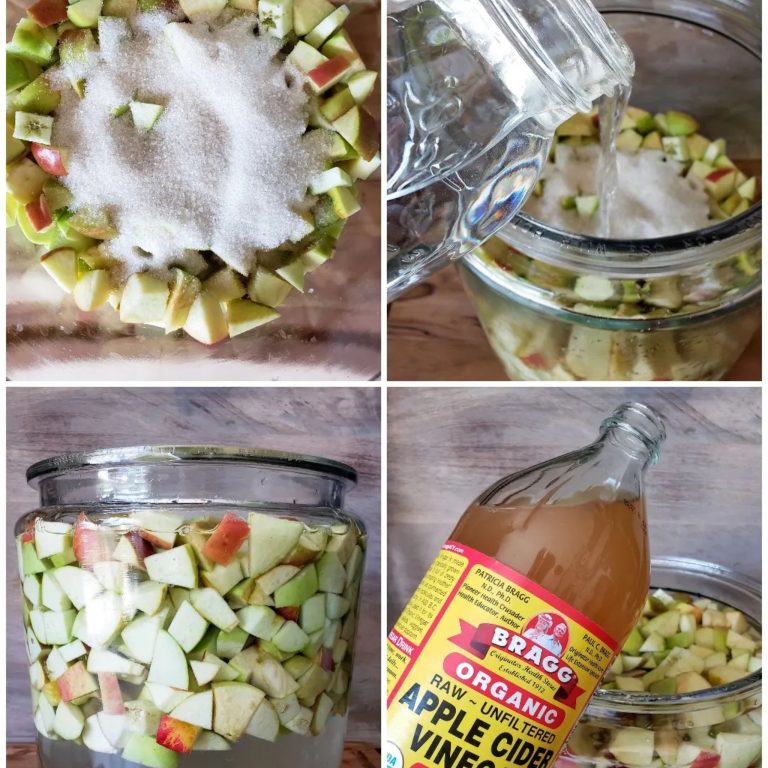ADVERTISEMENT
1. Prepare the Apples: Start by washing and cutting your apples into small pieces. You can use the whole apple, including cores, peels, and stems. If you have apple scraps from pie-making or another project, those are perfect for this use.
2. Start the Fermentation: Place the apple pieces in a clean, wide-mouth glass jar or ceramic crock. Fill the container with water, ensuring that the apples are completely submerged to prevent mold. The amount of water should just cover the apples.
3. Add Natural Sweeteners (optional): To speed up fermentation, you can add a small amount of honey or another natural sweetener. This step is optional and depends on your preference.
4. Cover the Container: Cover the mouth of the container with cheesecloth or a clean kitchen towel. Secure it with a rubber band or string. This cover will keep out insects and dust while allowing the mixture to breathe.
5. Allow It to Ferment: Store the jar in a warm, dark place for about 3 to 4 weeks. During this time, the natural sugars of the apples will ferment into alcohol. You can stir the mixture every few days to help release the gases and mix the naturally occurring yeast.
6. Strain and Second Fermentation: After 3 to 4 weeks, strain out the solid apple pieces, and return the liquid to the same jar. Cover it again with the cheesecloth and let it sit for another 4 to 6 weeks. During this period, the alcohol will turn into acetic acid, which gives vinegar its strong acidic taste.
7. Monitor the Vinegar: Taste your vinegar every few days. Once it reaches the acidity level you like, it’s ready to use. If it’s too strong, you can dilute it with water.
8. Store Properly: Transfer the finished vinegar into a bottle with a lid and store it in a cool, dark place. It will keep indefinitely and continue to mature, becoming smoother with age.
Conclusion
Making apple cider vinegar at home is a gratifying process that results in a versatile and beneficial product. Whether used for health purposes or in cooking, your homemade ACV can be a source of pride and practicality. Enjoy the process and the satisfaction of creating something beneficial from scratch!
ADVERTISEMENT
